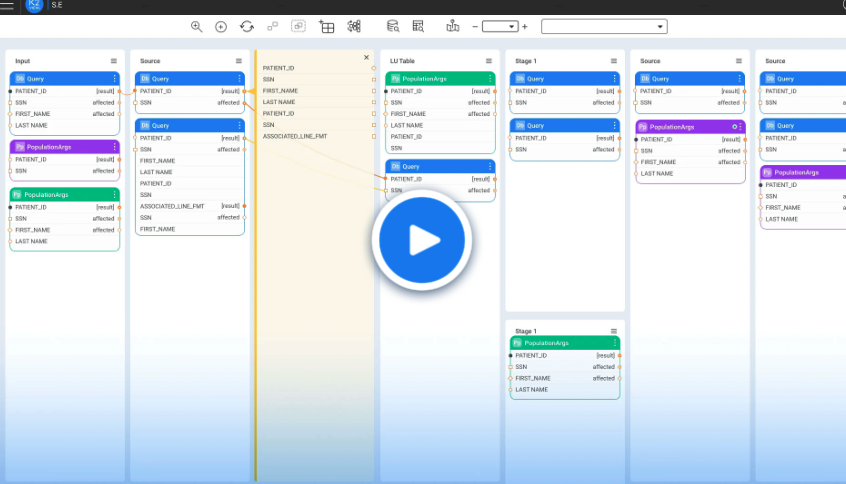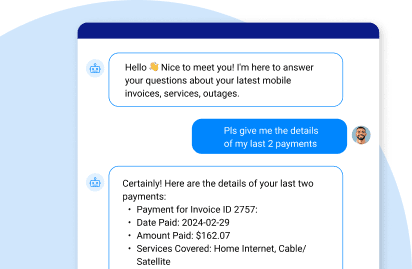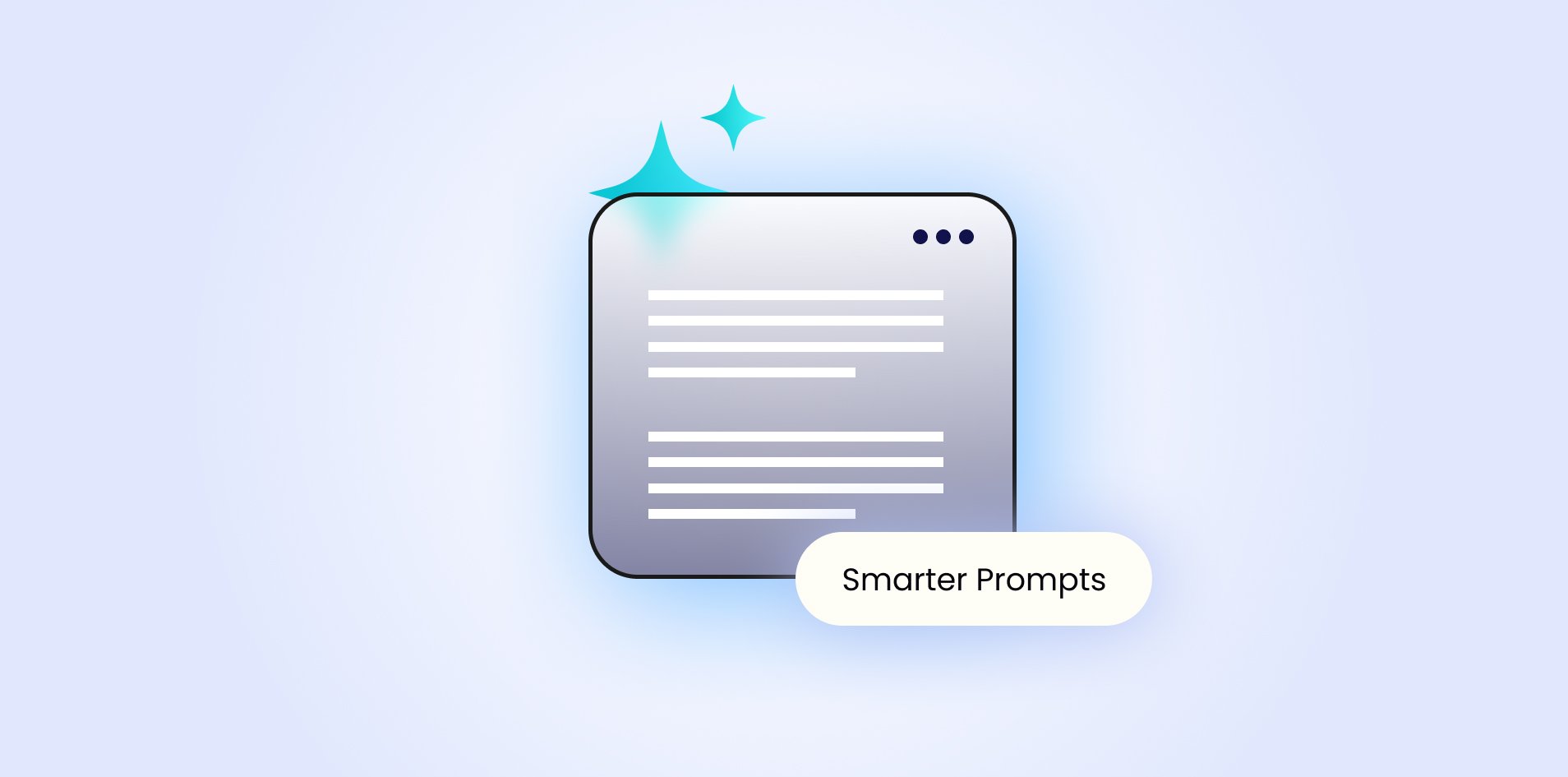Who needs conversatonal AI?
Conversational AI is a business-driven technology that’s changing how companies communicate with consumers, partners, and even their own employees. It enables natural, human-like conversations between a customer and a customer service chatbot, virtual assistant, or an intelligent AI agent.
What exactly are conversational AI platforms, where did they come from, and why are they so important today – especially for organizations that need to ground interactions in accurate, multi-source enterprise data?
In this article, we’ll break down the key aspects of conversational AI platforms, how they address enterprise challenges, and why bringing together data from scattered systems is a must for meaningful generative AI (GenAI) in the enterprise.
What are conversational AI platforms?
Conversational AI platforms are software solutions that allow computers to conduct conversations with users through text, voice, or both. Unlike traditional chatbots with simple scripted answers, these platforms use Machine Learning (ML), Large Language Models (LLMs), and Natural Language Processing (NLP) to understand intent, context, and nuance. They can answer questions, automate tasks, escalate complex cases, and even execute transactions – and even learn from every interaction.
The evolution of conversational AI
The first chatbots, like ELIZA in the 1960s, followed basic scripts and pattern matching and could only respond to a narrow set of prompts. Over the years, as ML and NLP improved, chatbots got smarter.
With the emergence of LLMs (like OpenAI’s GPT, Anthropic’s Claude, and Google’s Gemini), conversational AI platforms began handling open-ended questions, dialogues of any kind, and even complex reasoning through methods like chain-of-thought prompting.
Today’s conversational AI platforms are far more adaptive. They can retrieve enterprise data from multiple sources, via Retrieval-Augmented Generation (RAG), and offer contextual responses to user queries in real time, using the Model Context Protocol (MCP).
Conversational AI platform requirements
Many businesses store customer, product, transaction, and process data across multiple systems like CRM, ERP, billing, support, marketing, logs, and more. This data fragmentation makes it difficult for conversational AI platforms to deliver accurate, timely responses when users ask for personalized or context-rich information.
For example, if a customer asks about the status of their recent order or the unexpected charge in their latest bill, the AI virtual assistant must quickly access and unify data scattered across many different back-end systems. The data must also be current and compliant with privacy laws like GDPR, CPRA, and HIIPA. Stale or incomplete data leads to AI hallucinations, slower responses, and bad user experiences. While unprotected data leads to fines by regulatory authorities or punitive damages in the case of a data breach.
Case in point, a recent K2view survey found that just 2% of US and UK businesses consider themselves ready for GenAI deployment, mainly because of challenges associated with accessing real-time enterprise data and enforcing privacy and governance controls.
Conversational AI platform use cases
Many diverse use cases depend on conversational AI platforms, including:
-
Customer service
Automating support, updating orders, troubleshooting, and routing complex issues to human agents.
-
IT and HR support
Assisting employees with onboarding, troubleshooting, and FAQs.
-
Commerce and product queries
Recommending items, offering tailored discounts, or checking stock.
-
Banking, insurance, and teleco
Handling account inquiries, claims, and transactions using secure, multi-source data.
-
Compliance and data governance
Responding to regulatory inquiries and privacy requests with accurate, audited data.

Conversational AI platform vendors
The conversational AI platform market is rich and diverse, with vendors offering solutions that range from GenAI-native applications to traditional, hybrid, and vertical-specific platforms.
According to Gartner’s 2024 Market Guide for Conversational AI Solutions, conversational AI platform vendors can be split into 3 categories:
- GenAI-native applications
GenAI-native applications are built from the ground up with generative AI at their foundation, often for stand-alone use or as part of broader use cases, like self-service employee assistance as part of a comprehensive HR app. Vendors in this segment include:
a. Anthropic Claude Pro 2
b. Amazon Web Services Amazon Q
c. OpenAI ChatGPT Enterprise
These platforms are particularly well-suited for rapidly growing use cases, like code generation and conversational data analysis, although their customization may be more limited compared to other options. - Targeted extensions
Many enterprise platforms are adding conversational AI – and conversational AI latency – as key features, including:
These are typically embedded into existing enterprise platforms, providing conversational capabilities for focused business processes like AI customer service, sales support, or IT helpdesk automation.K2view
GenAI Data FusionCambridge Semantics Knowledge Guru 4 Microsoft
Copilot for
Microsoft 365Google
Gemini for
Google WorkspaceInstabase
Instabase AI HubSalesforce
Einstein Copilot, Einstein BotsServiceNow
Now Assist,
Virtual AgentGenesys
Genesys AIFreshworks
Freddy AISquirro
SquirroGPTConversational AI
Alkymi
Alpha - Dedicated platforms
Dedicated platform vendors provide full-featured platforms to build, deploy, and manage conversational AI apps across a broad range of use cases, including:
Each of the vendors listed above has different core capabilities such as multi-channel connectivity, low-code/no-code development tools, back-end integration, privacy compliance, and GenAI-specific LLM guardrails. Some conversational AI companies specialize in AI customer experience or employee experience, while others provide general purpose solutions for a wide variety of use cases.K2view
Data Product PlatformAda
Ada’s AI AgentAisera
GPT, AI Copilot,
GenAI PlatformAvaamo
Conversational AI
LLaMBAWS
Amazon LexBoost.ai
Conversational AI PlatformCognigy
Cognigy.AIDRUID
Conversational AI PlatformEspressive
Espressive BaristaGoogle
Contact Center
AI PlatformGupshup
Conversation CloudIBM
watsonx Assistant
and OrchestrateiGenius
CrystalInteractions
Intelligent Virtual Assistant[24]7.ai
Engagement CloudKore.ai
XO PlatformLeena AI
Leena AILivePerson
Conversational CloudMicrosoft
Copilot StudioMoveworks
Enterprise CopilotNetomi
Netomi AIOmilia
Cloud PlatformOneReach.ai
GSX PlatformOpenstream.ai
EVAPolyAI
PolyAIRasa
Rasa PlatformSprinklr
Conversational AI PlatformUniphore
U-Self Serve
When evaluating conversational AI companies, you should carefully consider your UX focus, scope, privacy and security needs, integration capabilities, and the ability to support advanced features like chain-of-thought reasoning and table-augmented generation (TAG). It’s also important to assess the degree of customization you require, and whether a best-of-breed or integrated approach is the most suitable for your needs.
For enterprises dealing with fragmented, multi-source data, easy integration to back-end systems and strong data privacy are especially critical – not only to ensure accurate, context-aware AI interactions, but also to protect sensitive data from leaking to LLMs or unauthorized users. A successful conversational AI platform must go beyond mere generative capabilities, providing access to fresh, complete, and secure enterprise data at conversational latency.
K2view is the ultimate conversational AI platform
Most conversational AI platforms only reach their full potential when connected to live, multi-source enterprise data. Otherwise, their answers risk being stale, generic, or even inaccurate.
LLMs, on their own, do not know your customer’s latest payment or your company’s latest policy. Retrieving data from structured and unstructured sources, and presenting it in context, ensures your LLM responses are both accurate and secure.
As conversational AI platforms become integral to how organizations serve employees and customers, unifying enterprise data is no longer nice to have. Even the most powerful LLMs must be grounded with fresh, complete, multi-source data – delivered in real time abiding by robust privacy guardrails.
Most organizations still have a lot of work to do in making their data accessible to conversational AI. The K2view platform – by fusing, securing, and orchestrating all relevant enterprise data for AI consumption – provides the best way forward.
Discover GenAI Data Fusion from K2view,
the number one conversational AI platform.













